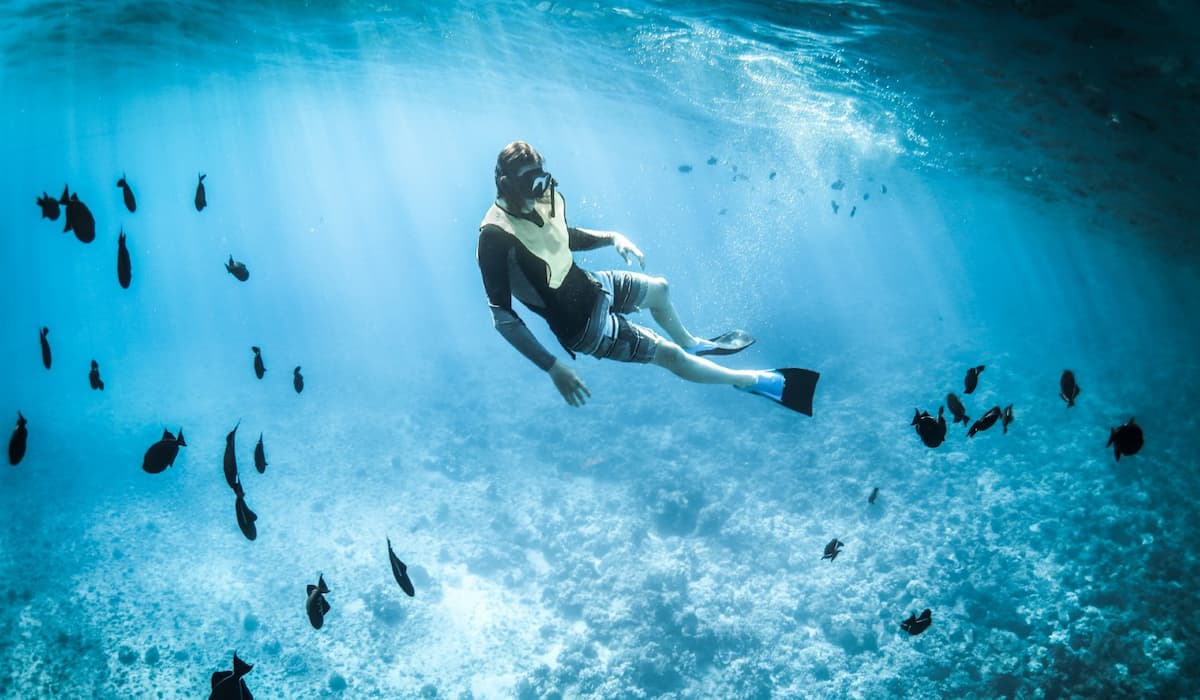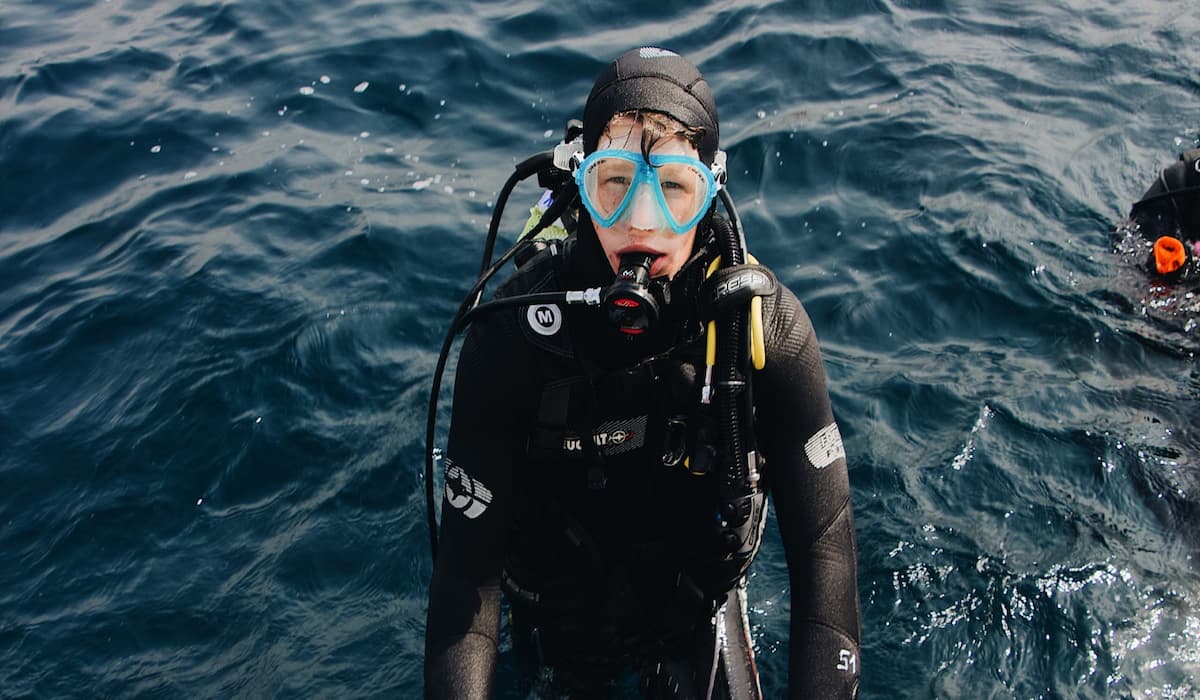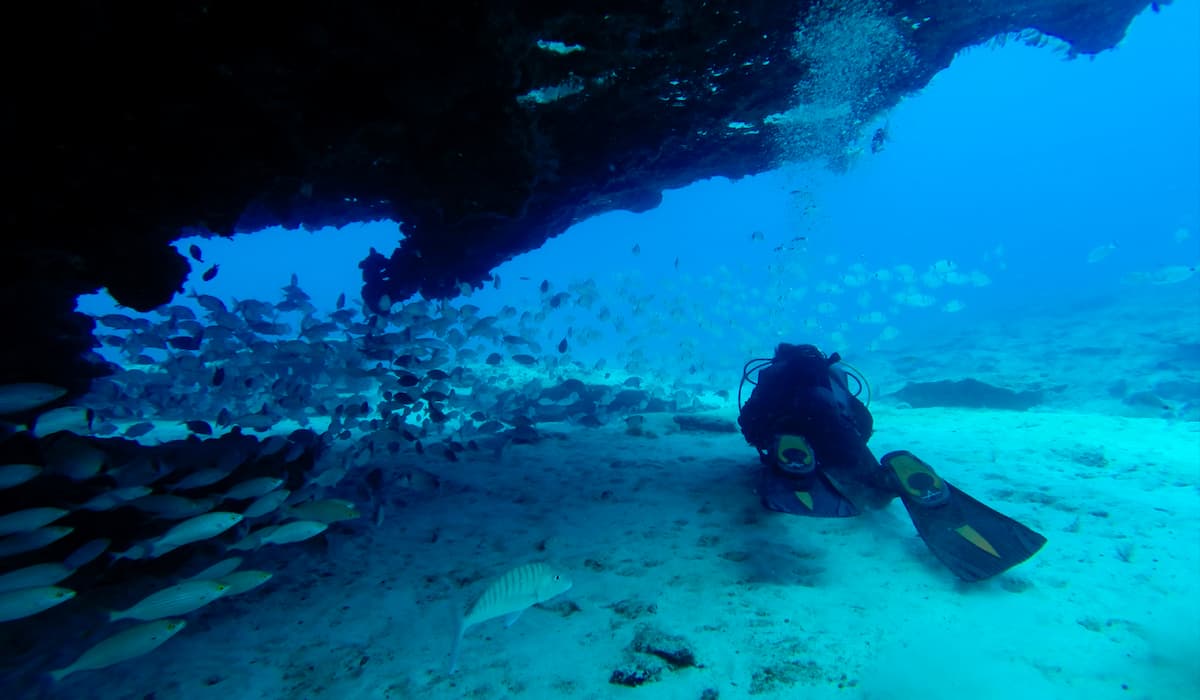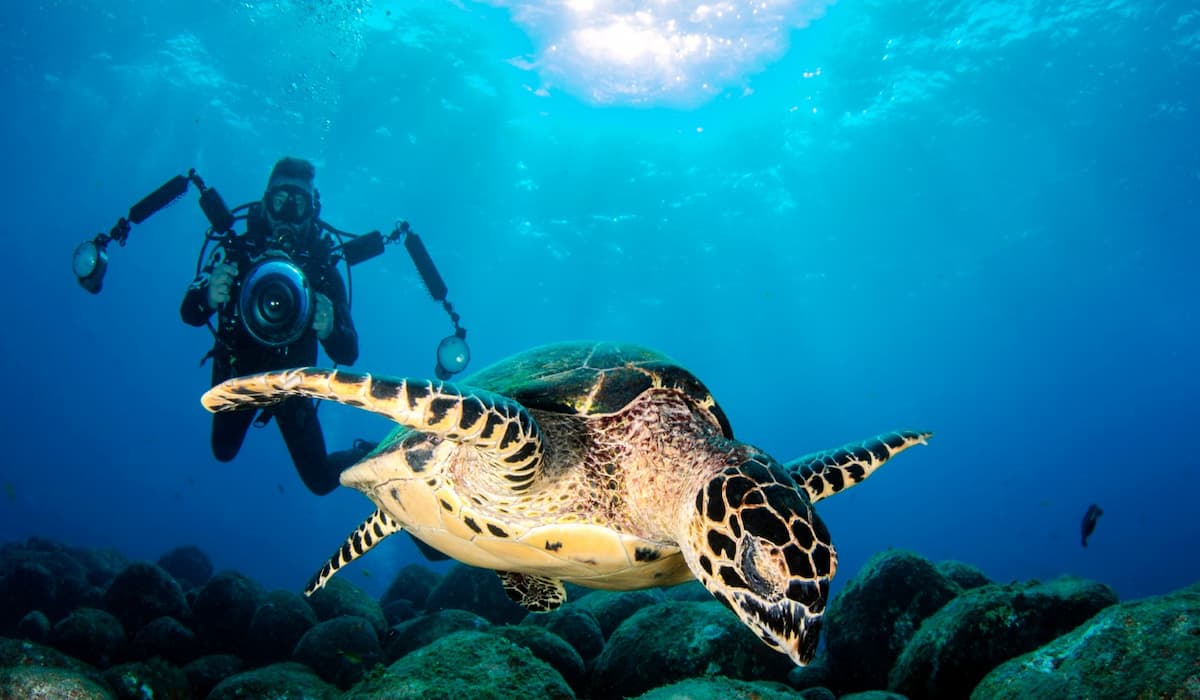The Canary Islands: a paradise for diving enthusiasts
Diving under the sea and discovering the world beneath its surface is a feeling that everyone should experience at least once in life. The seabed transmits a unique sensation of peace and tranquillity. The silence and beauty we see under the water can’t be found above the surface.
The Canary Islands are an archipelago surrounded by the Atlantic Ocean and all the islands have access to incredible underwater sites, which is why we invite you to visit the islands of Gran Canaria, Tenerife and Fuerteventura and discover the treasure hidden along their coastlines.
Scuba diving in Gran Canaria
The rich, varied landscape of the island of Gran Canaria is not only to be seen on the surface with surprising features such as its mountains and the impressive Maspalomas dunes. The seabed around the island is characterised by great natural beauty and we would certainly recommend it as ideal for diving.
El Cabrón:
The Arinaga Marine Reserve is considered the best area for diving in Gran Canaria. The coast at El Cabrón is a point you should not miss if you want to explore the island’s waters. It has been declared a natural reserve because of the quality of its waters, the excellent visibility and the variety of fish you will find when you dive: barracudas, shoals of seabream, horse mackerel, and even the odd manta ray. If you decide to visit the area in winter, when the water temperature does not fall below 17 degrees, you may also see angel sharks.
Pasito Blanco:
On the east coast of the island we find the Pasito Blanco beach and harbour, from which you can take a boat two miles out to sea to start your diving excursion.The reef where you will find grunts, barracudas, morays and rays is at a depth of about 19 metres, so you need to be an experienced diver to see it close up.
Agaete and Gáldar:
From the east we move to the northwest, to Agaete and Gáldar, which are exposed to the roughest waters of the Atlantic. In both towns, diving is practiced more by local residents than tourists. In this part of the island you will find areas to dive in which are up to 25 metres deep. The rock formations are perfect for seeing sea urchins and other species typical of the area, such as octopus, parrotfish and the Canary damsel, while autumn is the ideal time to observe the giant manta ray, a very popular sighting among divers.
The crystal clear waters of Fuerteventura
There’s no need to travel thousands of kilometres to the Caribbean to find crystal clear waters like those off the coast of Fuerteventura. This natural paradise which is so close to us is home to a fascinating underwater world. More than 300 species live in these waters and if you dive beneath them, you can find turtles, groupers, barracuda and rays, among others.
Isla de Lobos:
This picturesque island to the north of Fuerteventura has been a Nature Reserve since 1982 and is surrounded by veritable paradises for divers. The volcanic origin of the island can be seen when you swim under water and observe the rock formations that surround Fuerteventura. The island is reached by boat from Corralejo harbour and during your dive you will be able to see, and film with an underwater camera if you wish, red mullet, Atlantic chromis and horse mackerel.
Jandía:
From the north we head south to the picturesque Jandia Peninsula. This is the most popular area with tourists and attracts many diving enthusiasts. One of the most interesting spots is El Cañón, about 10 minutes by boat from Morro Jable harbour. It is a simple dive with a maximum depth of 14 metres, suitable for divers of all levels of ability.
However, if you are more experienced and want something more exciting, we would recommend Veril Grande. Located about 200 metres from the Morro Jable coast, you will find a stone wall that can be reached by boat. The water is about 20 metres deep and you can make two types of descent, depending on your diving ability. Thanks to the crystal clear water and bright light, you can see species such as seabream, moray eels, crabs and angel sharks without going down very far. But if you’re an experienced diver, you can go down 20 metres and explore the caves.
Tenerife and its impressive cetaceans
The island of Tenerife will impress you from the moment you set foot on it. Outstanding features include the volcanic Mount Teide, the highest peak in Spain, the idyllic Lago Martiánez de Manrique in Puerto de la Cruz, and the exclusive Costa Adeje tourist area.
But diving trips are undoubtedly one of the greatest attractions for visitors.
Los Gigantes:
If you put on your wetsuit and jump into the water by the impressive Los Gigantes cliffs, you can see species such as trumpetfish, parrotfish and sea turtles, but you’re also in the right place if you’re looking for more excitement.
Just a few kilometres off the coast you can find dolphins, whales, and two kinds of shark: the angel shark and the dogfish. If you come to visit us, you have the opportunity to see these animals close up, a unique experience. And, if you’re very lucky, you might see orcas or a blue whale.
Tabaiba:
Another option you should definitely consider when you plan a diving trip in the Canary Islands is exploring underwater caves, caverns and shipwrecks. You can dive inside sunken ships, some with curious stories, such as the wreck of the tugboat El Peñón, located in the Tabaiba area, which was operational for 49 years in the port of Santa Cruz de Tenerife. But be careful, this boat is 32 metres down, so you must have previous experience as a diver to see it close up.
The idyllic Canary islands are easily accessible with a wealth of attractions. We hope you have enjoyed learning about the unique underwater sites you can visit.
Categories: Canaries, Fuerteventura, Gran Canaria, Tenerife







Leave a Comment